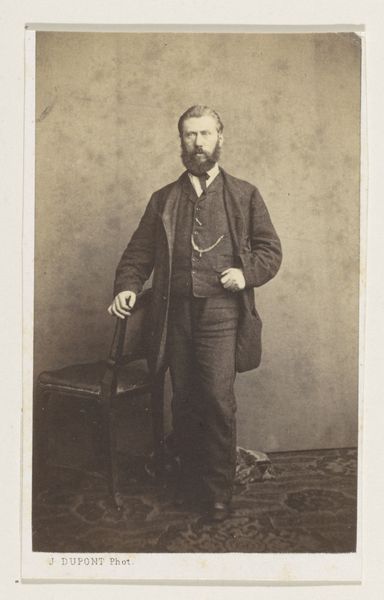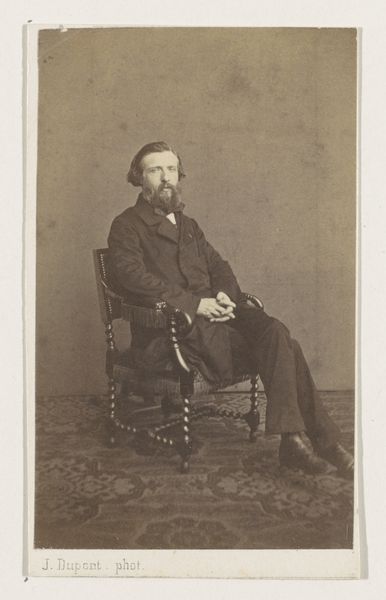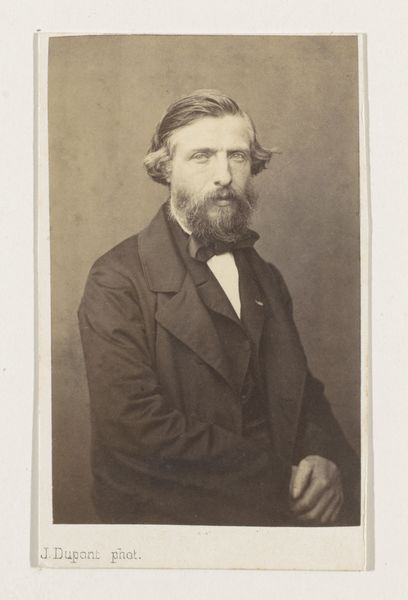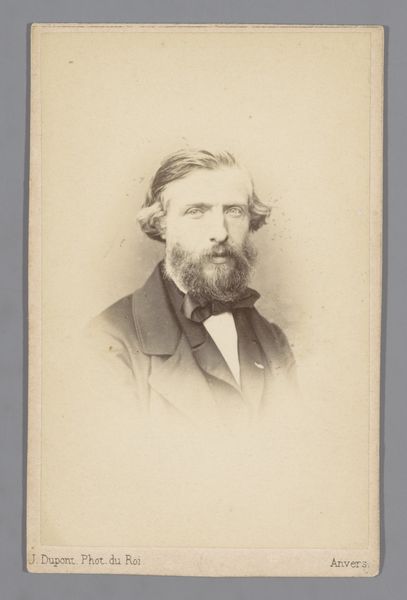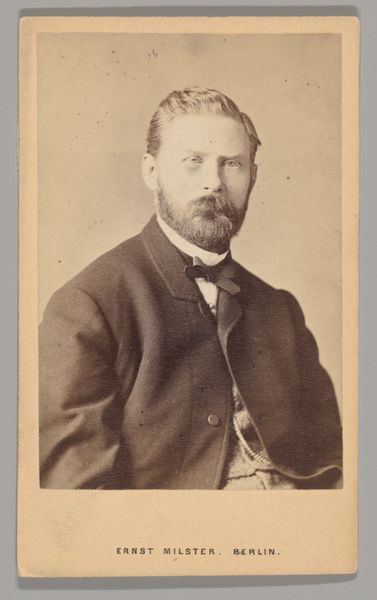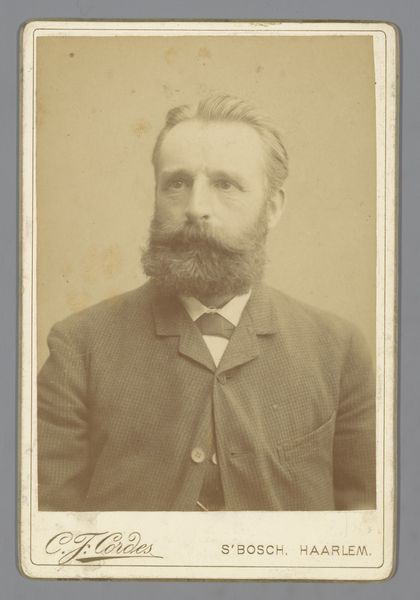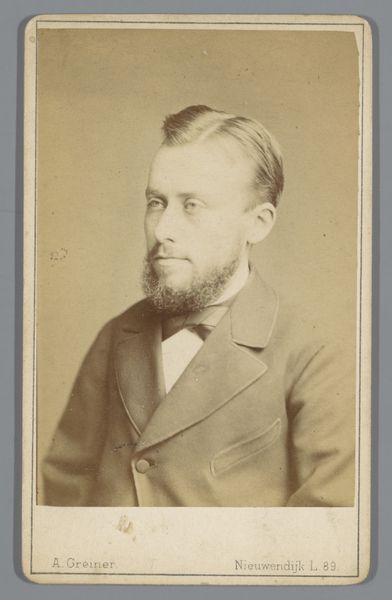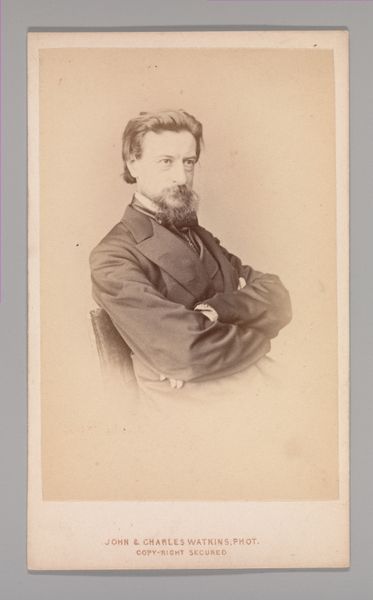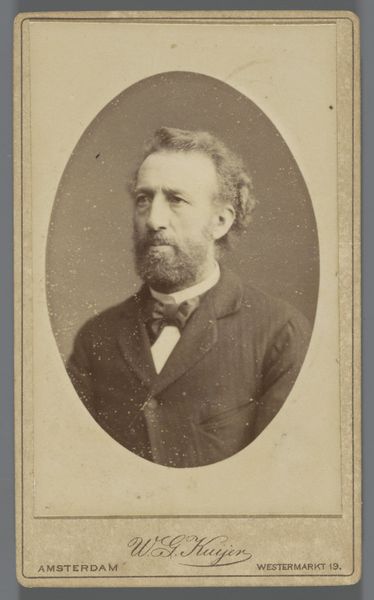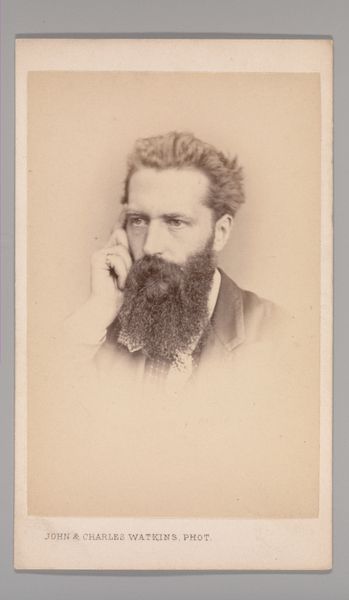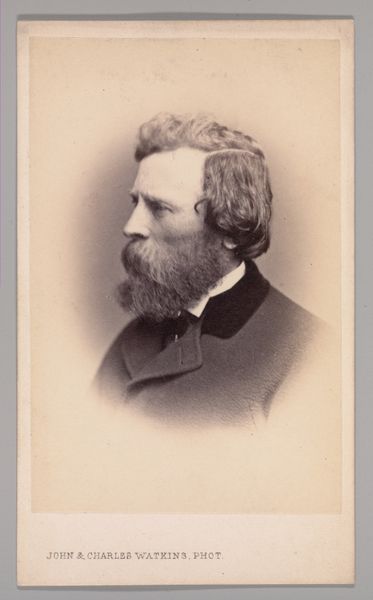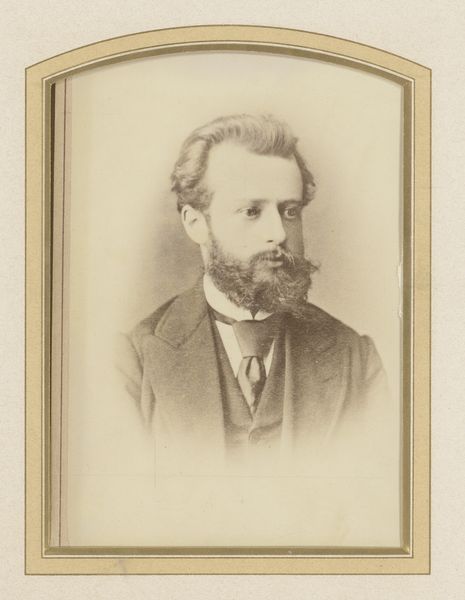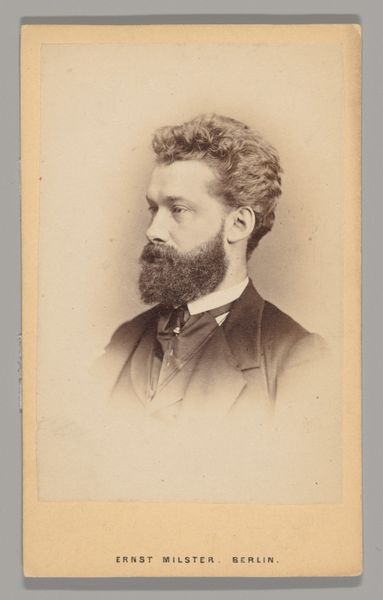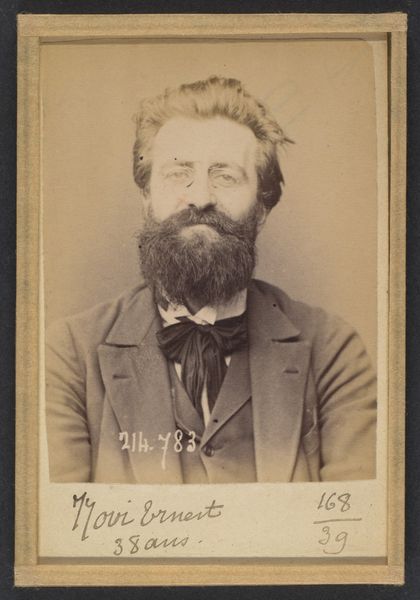
photography, gelatin-silver-print
#
portrait
#
photography
#
gelatin-silver-print
#
realism
Dimensions: height 101 mm, width 61 mm
Copyright: Rijks Museum: Open Domain
Curator: Right, let's delve into this captivating portrait. What strikes you most when you first see it? This is a gelatin-silver print from 1861, entitled "Portret van de schilder Adolf Alexander Dillens, halffiguur," by Joseph Dupont. Editor: Well, immediately I get this very grounded, earthy feeling. The tones are muted, sepia almost, which lends an incredible gravity. And his gaze... intense, yet averted. It's like he's looking both into himself and also judging you at the same time! A slightly world-weary artistic assessment? Curator: Precisely! Consider the socio-political moment. Photography in 1861 was becoming more accessible, challenging traditional portraiture. The choice of a gelatin-silver print reflects an artistic movement toward realism. Notice Dupont isn’t idealizing Dillens. He's capturing the essence of an artist at work, deeply engrossed in his craft amidst burgeoning Realism. Editor: The almost drab color only enhances that gritty realism, doesn't it? There's something melancholic, too. The weight of time, the seriousness of artistic endeavor... And yet, that elaborate tie and chain hint at bourgeois sensibilities too. Is there tension there between these classes, between Bohemia and the bourgeoise? Curator: Certainly. Dillens was celebrated for his genre paintings, depicting everyday life. His portrait mirrors that ethos; yet, photography also held an accessible democratization that other art didn’t. Displaying this work shows an intersection where photographic technologies enabled wider publics to participate in crafting and reflecting upon social narratives in novel, radical, ways. Editor: You can also feel that duality captured in this almost stoic demeanor. Like the painting represents some kind of quiet revolutionary shift—a change that’s perhaps also deeply challenging or emotionally testing for him? Curator: Absolutely, this photography creates not merely representation but contributes to making and archiving shifting attitudes about realism during that transformative historical and political era! Editor: This photograph reminds us of art's reflective and critical power—to illuminate the seen, and perhaps also to prompt our questions about the unspoken? What else are artists seeing? Curator: Right. This exploration reminds us of the importance of photography's place within shifting artistic and social currents; and of our crucial role within them today.
Comments
No comments
Be the first to comment and join the conversation on the ultimate creative platform.
